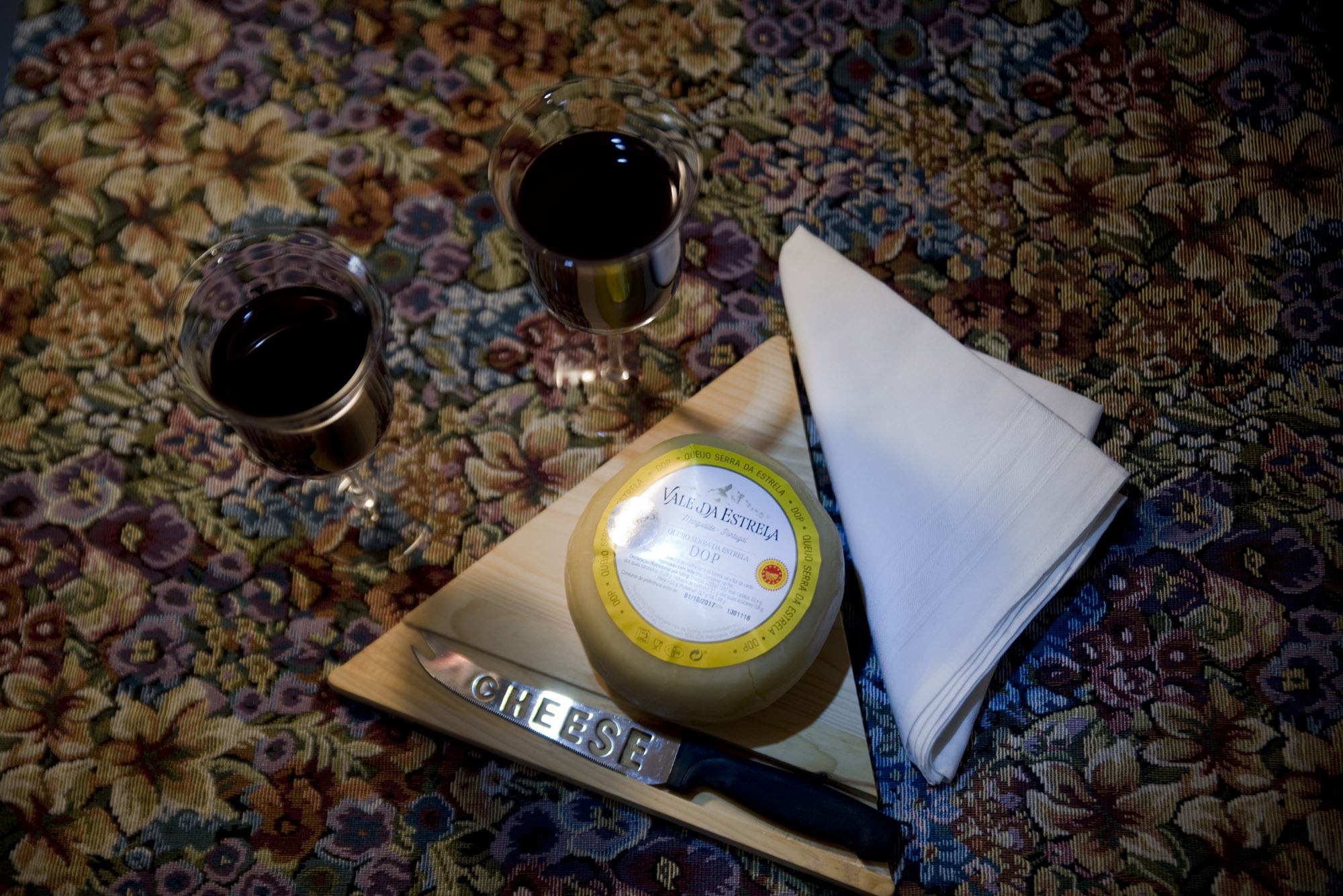WHICH ARE THE SUITABLE WINES FOR SERRA DA ESTRELA CHEESE?

Cheese and wine seem to be made for each other. If we add bread and olives to them, we have the basis of Mediterranean food and everything needed for a nutritious, healthy and, above all, appetizing meal.
However, despite being inseparable companions, not every wine pairs well with every type of cheese. This is especially true for Serra da Estrela which, certainly because it is the best known and most prestigious of Portuguese cheeses, has also been the most abused in terms of its “marriage” with wine.
It is not known why, for too long, national consumers took it for granted that cheese (whatever it was) was to be accompanied by red wine, quite unlike the French, who have long chosen white as the preferred company of the vast majority of Gallic cheeses. And since Serra da Estrela has a soft paste (commonly known as “buttery”), the noble cheese most appreciated by the Portuguese, invariably, the red came to keep it company. The quality of the cheese and the quality of the wine were worth their while and often disguised the lack of harmony. Fortunately, today, in the most ambitious restaurants or in the most knowledgeable houses, the “buttery” Serra da Estrela is increasingly accompanied by a good white wine.
There is a powerful reason why many cheeses, and in particular the soft cheese Serra da Estrela, do poorly with reds: the milky fat evident in this type of cheese “pulls” the tannins of the red, making the wine bitter and aggressive. At the same time, many reds often lack the acidity needed to cleanse the palate of cheese fat.
So, in fact, for the buttery Serra da Estrela cheese, the wine that works best is a full-bodied white, with the creaminess given by fermentation in barrels, and with refreshing citrus acidity. This profile fits the whites of Dão, produced in the same region that originates the noble Serra da Estrela, and made mainly from the Encruzado and Malvasia Fina varieties.
And what about Serra da Estrela with a hard paste, the matured cheese, with a longer curing time? Well, that’s where the case changes. On the one hand, in an old cheese, the milk fat is much less noticeable; on the other hand, the prolonged curing “pulled” the salt and gave it more intensity. A vigorous and tannin red is still not recommended, but a young and smooth red is now perfectly suited (we can continue in the Dão, and in the wines of Touriga Nacional, Alfrocheiro or Jaen) with body and fruit fulfilling the role of softening and clean the strong taste that cheese leaves in the mouth. As with everything in life, it is a matter of balance and harmony.
Mariana Lopes
Journalist in VINHO Grandes Escolhas Magazine
